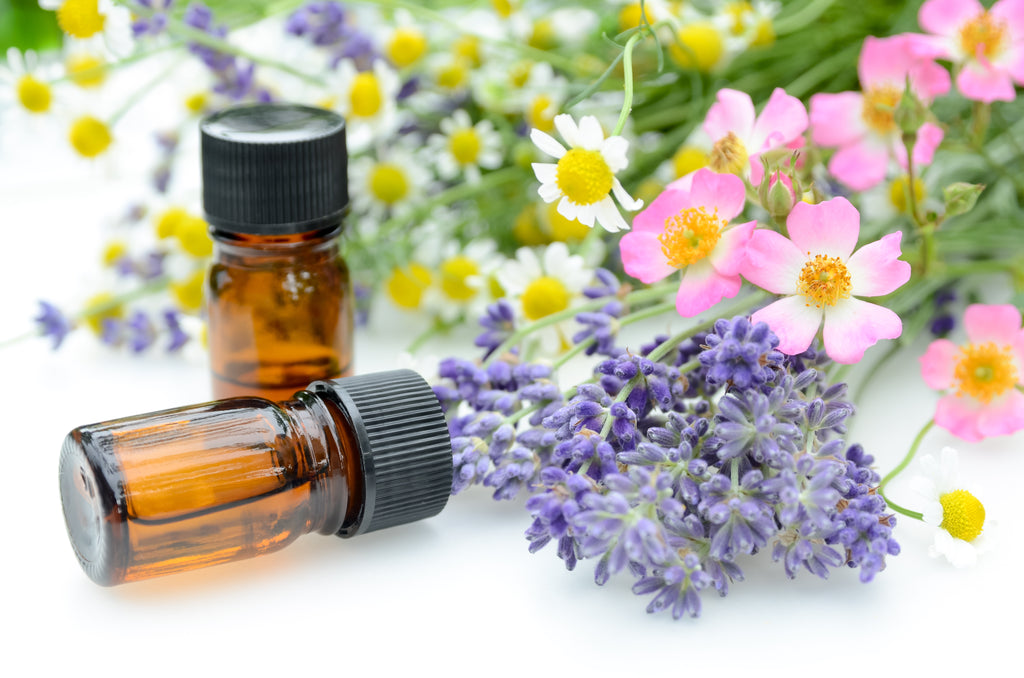Natural Remedy for Better Sleep

Welcome and thank you for joining our blog.
As you probably already know, in TRUESSENCE we focus on using only natural ingredients to help us in our busy modern lives.
Many people are still skeptical about whether plant-based ingredients work, and whether they can be used to decrease artificial medicine usage. We are not saying that our products can be used as medical replacement and it should not be, but that it isn’t always necessary to reach for antibiotics or synthetic chemical when you have a sleepless night, a stressful day, low energy morning or slight headache, or when you are not yourself.
Essential oils and human beings have a great deal in common – we are both alive. Essential oils come from plants, while we rely totally on plants: we eat plants, and animal which eat plants, and breathe air made possible by plants.
Let’s take a look at trees, it might look helpless, locked to one spot in the ground, but they are actually very active and resourceful: they use chemistry to talk to each order, they produce chemicals called tannis which protect and kill the predator, they adapt over one generation to deal with many generations short-lived insects. Trees and plants have natural defenses to protect themselves from harmful invaders like fungus, bacteria and insects. The naturally occurring oils contained in the leaves, stems, bark, wood and flowers of some plants help to keep the plants healthy. These are the essential oil. There is a whole chemical way of life for plants which we are only just beginning to discover.

January is still in dark season and a good month to establish good sleep routines if you haven’t got one. A good quality sleep is one of the most important elements for our life quality. Promoting restful sleep is one of the main benefits of essential oils.'
Natural Remedy for Better Sleep
According to a study in the Journal of Clinical Sleep Medicine, poor sleeping quality can lead to depressed mood and difficulty processing ideas. Sleep problems can also lead to increased weight gain and increase your chances of getting sick (1).
We all experience sometime difficult to fall asleep due to various reasons like stress, over thinking mind, back pain, alcohol, financial issue, lack of exercise, etc.
If counting sheep is no longer an option, spending your nights tossing and turning, there are a few “easy to follow” tips help to fight for sleeping challenges
- Set the mood: dim the lights at least 30 minutes before bedtime. Turn off extra noises, lights and distractions.
- Set a right temperature: A slightly chilly temperature (between 16-20 C) helps decrease your body’s internal thermometer, initiating sleepiness and ensuring that you stay comfortable throughout the night.
- Skip late night sugar: Avoid eating sugary sweets, chocolate, simple carbs, juice or high-glycemic fruit just before bed.
- Keep electronics out of bed.
- Work out in the morning.
- Relax with a detox bath.
- Use essential oil: Incorporating essential oils into nightly routine, it won’t solve your personal or financial issues, but it is a safe, natural and therapeutic way to encourage your body to wind down, so you have better energies for next day.

Essential oils are known to help with numerous aliments, SLEEP is one of them. What is great about essential oil is that you don’t get that groggy feeling or other side effect that often comes with a synthetic sleep aid.
There are a few essential oils have sedative properties which can be helpful for people who are having trouble falling asleep or sleeping thought the night. Below three essential oil are my favorites choices for a calming and relaxes effect, ease tension, which holds true for solid sleep.
Lavender (Lavandula angustifolia)
Lavender essential oil was discovered over 2500 years ago and is called “the mother of essential oil” and is the most used essential oil in the world today. It has a fresh, light, sweet-herbal aroma with floral woody notes. Lavender essential oil contains a significant percentage of Linalyl acetate linalool compounds, it has many therapeutic properties like analgesic, antibacterial, anti-depressant, anti-microbial, calmative, sedative, so it is used for aromatherapist for treating anxiety, stress, tension, panic, agitation, depression, improve sleep and treat insomnia. A study shown in haled lavender oil before bed four times a week for eight weeks had significant improvement is sleep quality. (2)

Lavender also has skin healing ability for treating burns, ulcers, itching, rashes, irritations, infections, wounds, and other types of damage, so the lavender is also popularly used in cosmetic industry.
Lavender is harvested in midsummer, left to dry for a couple of days to maximize the aroma, them stilled. Wild French lavender grown at over 2,800 feet high altitude is categorized as “true” French lavender. Today lavender is grown in many countries, each version having somehow different properties. The character of lavender is harmonious, calming, healing, caring and embracing, it able to care for a multitude of physical and psychological problems, like a mother accomplishing several jobs t the same time. For home growing lavender and understanding lavender types, happy to share this inspiring article from Happy DIY Home of New Zealand, https://happydiyhome.com/lavender/
Roman Chamomile (Anthemis nobilis)
Roman Chamomile is one of the most ancient medicinal herbs known to mankind. Many different preparations of chamomile have been developed over the years, and the most popular is in the form of herbal tea, with more than 1 million cups consumed per day.

The relaxing properties of Roman chamomile promote healthy sleep and fight insomnia. A 2006 case study explored the inhalation effects of Roman chamomile essential oil on mood and sleep. The results found the volunteers experienced more calmness, demonstrating its potential to improve sleep and help enter a restful state (3). Roman chamomile also has anti-inflammatory, analgesic and antibacterial therapeutic properties, it is commonly used to treat menstrual cramp, rashes, acne, insect bites and stings.
The botanical name of chamomile derives from the Greek Anthemis meaning” little flower” One variety of Anthemis has been found at ancient Egyptian sites from the predynastic period. In early Scandinavian culture, chamomile was associated with the sun god and appeared in all the European herbals. Chamomile roman is serene and gentle, is like someone who has been blessed with sunshine and joy. It has sweet, warm, intense, apple-like, herbal aroma, with harmonizing, peaceful, soothing and spiritual character.
Ylang Ylang (Cananga odorata)
Ylang ylang comes from flower petals of the large tropical ylang ylang tree and are widely grown in tropical areas throughout Asia today.
Ylang Ylang was native to southeast Asia and can be harvests year-round. Cultivated tree are often cut back to 6 feet so the flowers can easily be reached. Most of the ylang ylang flowers are still hand-pick today when the flowers are matured and signaled by a red tinge at its base. The flowers are picked very early in the morning and distilled immediately.

What is ylang ylang essential oil good for? It’s considered an effective aid to treat anxiety, depression, and insomnia. It is also known for its unique relationship with the heart, and its ability to slow a rapid heartbeat and used to help with stress and tension. A 2018 study published in the Journal of Ethnopharmacology found that evidence that Ylang Ylang has positive anti-anxiety effects due to influencing processes in the hippocampus region of the brain and serotonin system. (4) It’s also beneficial for fighting insomnia and chronic fatigue syndrome since it has mild sedative effects and can lower stress responses.
What does ylang ylang smell like? Ylang ylang means “flower of flowers” and was given this name because of its sweet, floral scent. Some of the flowers are process by fractional steam distillation, resulting in oils of different densities, classed as grade: extra, first, second and third. Extra grade is produced after two hours of distillation. Grade three is the result of up to 20 hours of distillation. The fragrance intensity is strongest in the extra and reducing with each grade to third. The first fraction of the distillation is regarded as having the “best” scent, but the third fraction is also used in perfumery. In fact, you can recognize ylang ylang’s smell as one of the key ingredients used in the legendary perfume Chanel No. 5.
Soothing and Relaxation Synergy Blending of Lavender, Roman Chamomile and Yalng Ylang
What do we mean when we talk about "synergy" with essential oils?
When the combination is more than the sum of the parts, there is a synergistic effect. Mixing two or more essential oils create a compound that’s different from any of the component parts and these blends can be very particular and powerful. A blend can increase potency without increasing the dosage. For example, the sedative of chamomile essential oil is greatly increase by adding lavender and ylang ylang in the correct proportion. The interaction of essential oils with each other gives a dynamism to the whole that might not be achieved by using a single essential on its own.
The important point about synergistic blends is that the proportions and should be correct. During the production of Truessence, we blend in volume so that the smallest component oils can be incorporated into the whole in the right proportions. Dilution percentage is essential when come down to final products, over doges of essential oils may result of skin irritation and sensitization.
With essence oil, balance is all. When balanced, the body and mind can perform to their best.
You can find this beautiful soothing and relaxation blend from Truessence products.
- Sleep roller
- 2 Soothing & Relaxation body butter

Reference articles:
(1) https://www.ncbi.nlm.nih.gov/pmc/articles/PMC1978335/
(2) https://www.ncbi.nlm.nih.gov/pmc/articles/PMC4443384/
(3) https://www.sciencedirect.com/science/article/abs/pii/S0962456206000245


Leave a comment